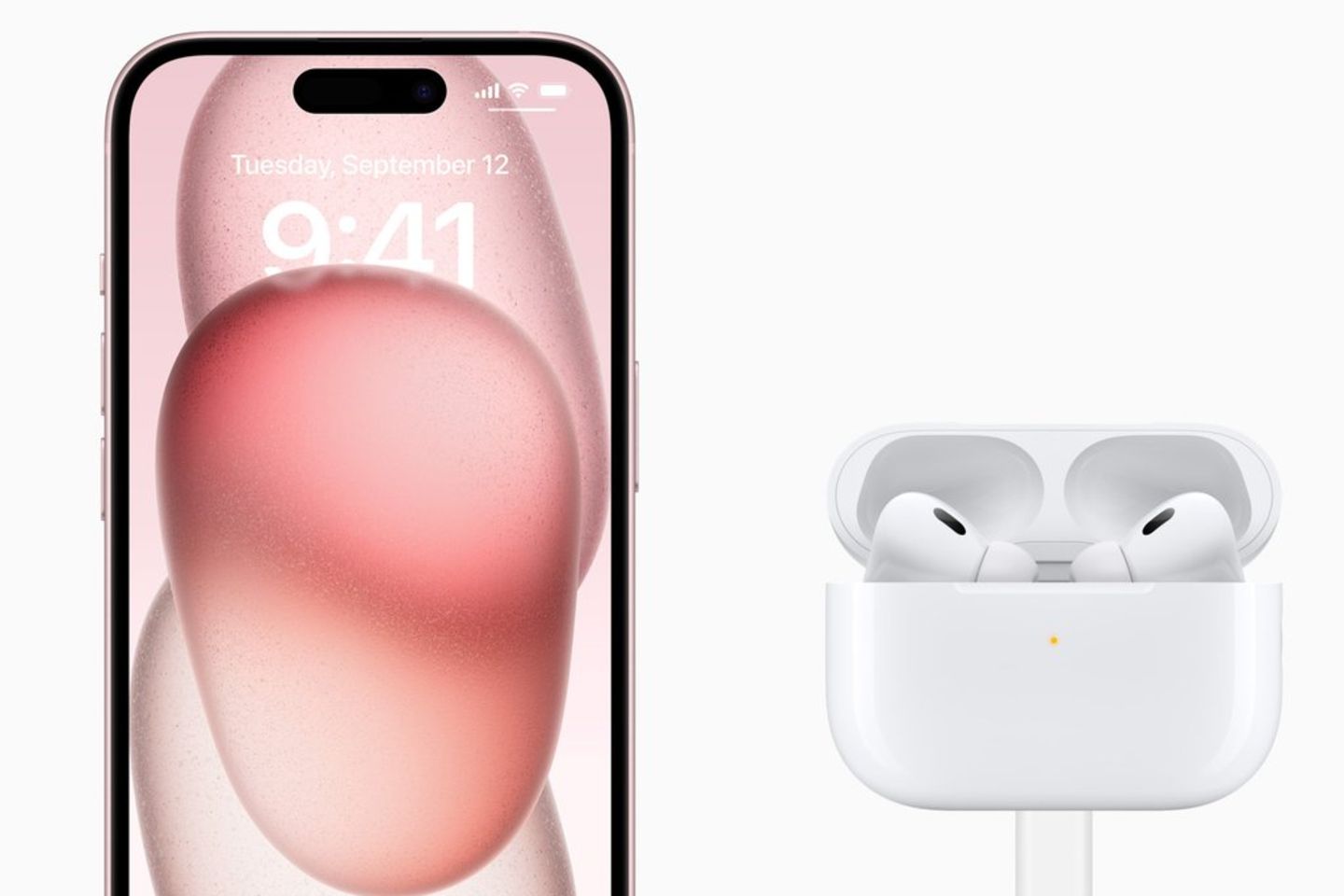AirPods Pro in the test
The new in-ear headphones from Apple can do that
The new AirPods Pro only develop their full performance when paired with a current iPhone with iOS 17, preferably a 15th generation device.
©Apple
In addition to the new iPhone generation, Apple also recently launched the new AirPods Pro. Is it worth buying?
Visually, at least, hardly anything has changed compared to the first generation of AirPods Pro – apart from the new charging socket at the bottom of the case, which was already mentioned. But there are also innovations on the hardware and software side. Are the usual full-bodied announcements from the manufacturer also reflected in daily use?
The newly installed H2 chip is intended to give the AirPods Pro more power, which is primarily reflected in improved noise cancellation and the even more practical transparency mode. In everyday testing, significantly better results were achieved, for example in active noise cancellation: The AirPods Pro isolate you even better from the surroundings if necessary, and external noises hardly penetrate the eardrums. In the so-called transparency mode, which allows noises to pass through, all ambient sounds are translated or reproduced even better than before. The previous model’s sometimes tinny-sounding mode also seems to have taken a big leap forward.
The first generation AirPods Pro also get a software boost
The so-called Adaptive Audio mode, which intelligently adapts the noise control to the environment, is completely new. Certain sounds are automatically prioritized, thus combining transparency mode and active noise support. Conversation recognition is also new: When detecting your own voice, the AirPods reduce the volume of the music being played, while at the same time amplifying the voices of conversation partners and reducing background noise. Even if this mode feels strange and unfamiliar at first, after a few times you won’t want to be without it.
However, the features Adaptive Audio, conversation recognition and personalized volume (AI-supported, ambient conditions and volume are adjusted according to the user’s preference) also work on the old Apple AirPods Pro. This requires a software update of the corresponding iPhone to iOS 17. The result does not provide the same precision, but for the layperson it produces an almost identical sound result. So do you really need the second generation?
The battery life of the second generation Apple AirPods Pro has also increased significantly. While the predecessors gave up after around 4.5 hours, the current AirPods last around 6 hours. The charging case offers a total of around four charges, which means you can get around 30 hours of listening pleasure without charging. Previously it was only around 24 hours. According to the manufacturer, there is no change in the basic charging speed: five minutes of charging in the case provides an hour of music enjoyment.
Conclusion:
As already mentioned at the beginning, the 279 euros charged by Apple are a proud price for what is technically offered. Although there are no major criticisms of the Apple AirPods Pro 2, there are similar products from other manufacturers for less money. The old AirPods Pro also get a software makeover with the iOS17 update and can now have numerous features just like the new variant. The problem: Anyone who owns an iPhone, perhaps even an iPhone 15, can’t avoid getting the new headphones when they need them. The interaction and ease of use between the iPhone and AirPods are just too convincing.
